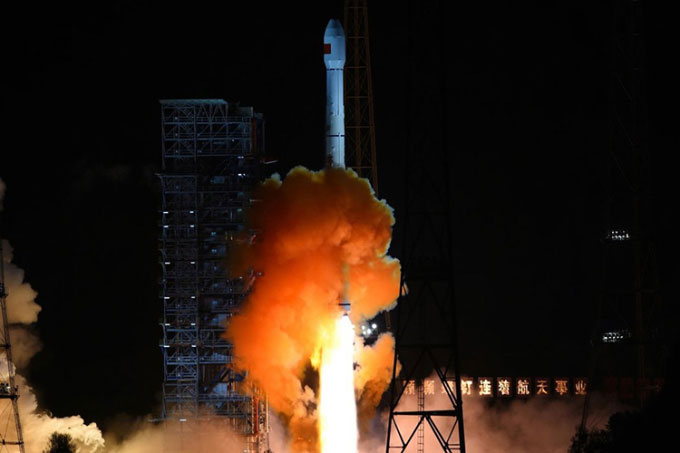The Chinese Ministry of Foreign Affairs rejects the U.S. claim that a piece of space debris heading towards the Moon belongs to the Long March 3C rocket.

The Long March 3C rocket launched the Chang’e 5 T1 mission in October 2014. (Photo: AP)
A large piece of space debris known as WE0913A is hurtling towards the dark side of the Moon and is expected to collide on March 4. The object was initially identified as the second stage of the SpaceX Falcon 9 rocket used in the launch of the Deep Space Climate Observatory (DSCOVR) seven years ago. However, in a statement on February 12, American astronomer Bill Gray clarified that the debris belongs to the Long March 3C rocket launched in October 2014 as part of China’s Chang’e 5 T1 lunar exploration program.
Explaining the mix-up, Gray stated that his research team detected WE0913A flying past the Moon two days after the DSCOVR launch. They identified it as the upper stage of the Falcon 9 rocket due to its expected brightness, appearing at the right time, and moving on a plausible trajectory.
However, after receiving input from engineer Jon Giorgini at NASA’s Jet Propulsion Laboratory, who suggested that the Falcon 9’s flight path was not close to the Moon and thus unlikely to collide, Gray reanalyzed the launch data from that period. He realized that the upper stage from the Chang’e 5 T1 mission had an initial orbit at a height that very few rockets achieve, making it far more likely that the object would collide with the Moon on March 4.
In response to this statement, the Chinese Ministry of Foreign Affairs on February 21 denied responsibility and asserted that the Long March rocket in question had re-entered the Earth’s atmosphere after completing its mission and “burned up completely.”
Spokesperson Wang Wenbin also emphasized that China adheres to international laws regarding space development and is committed to maintaining the long-term sustainability of activities in space.
China aims to become a space superpower and has invested billions of dollars in its military-run space program. The world’s second-largest economy hopes to send its astronauts to the Moon in the near future.


















































